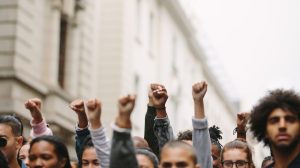Following the murders of George Floyd, Breonna Taylor and countless others — and the increasing importance of the Black Lives Matter Movement — the push for increased diversity and inclusion in corporate America has grown like never before. But now, one year into this new era of social justice, some experts fear there may be a potential loss of steam for many corporate diversity officers and the initiatives they’ve put in place.
Alicia Diaz of The Grio has warned that “industry experts fear the momentum could run out because of the ongoing cost and effort of long-term commitment, lack of support from top company officials — or burnout among diversity officers.”
“Organizations have been able to get away with having a really big vision and not really living up to it,” Tina Shah Paikeday, global head of diversity, equity and inclusion advisory services at Russell Reynolds told Diaz in an interview. “I think that now employees are demanding action that goes along with the words.”


















